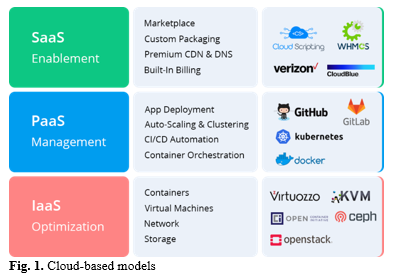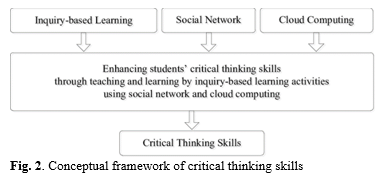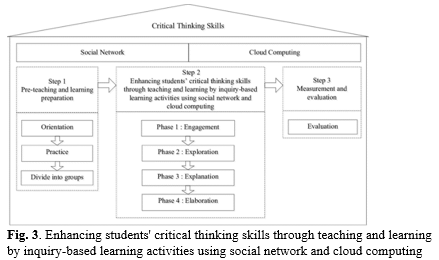
DOI 10.24411/2658-3569-2020-10094
Pedagogical conditions for the formation of critical thinking of primary school students by cloud technologies
Байсаева Малика Усамовна, доцент кафедры финансов, кредита и антимонопольного регулирования, ФГБОУ ВО «Чеченский государственный университет»
Байсаев Зубайр Исмаилович, Российская академия народного хозяйства и государственной службы при Президенте РФ
Bajsaeva Malika Usamovna, Bajsaev Zubajr Ismailovich
Summary. The effectiveness of any pedagogical technology depends on many factors, in particular on its humanistic orientation, which requires the implementation of a personal approach to the selection of educational content, methods, organizational forms of learning, and the learning process as a whole.
We believe that critical thinking is not a separate skill, but a complex of skills and abilities that are formed gradually, it is the result of the daily hard work of teachers and students. The primary school teacher, in his teaching activities, decides what methods of forming and developing critical thinking will be used.
The article examines the advantages of cloud technologies over traditional forms and methods of teaching students. The essence of the concept of «cloud technologies» and their function are specified, the prospects of use in the educational process in order to improve the quality of general education are outlined.
Methodologists distinguish two main approaches to teaching students to think critically – through the introduction of a separate course in an educational institution («Critical thinking»,» Socratic dialogue»,» Philosophy of thinking», etc.) or through the appropriate organization of the pedagogical process of any of the educational subjects.
Key words: critical thinking, pedagogical condition, primary school students, lessons, cloud technologies.
1. INTRODUCTION
For primary school students, the most effective use of elements of critical thinking technology is when learning the foreign language and reading literature.
It is important to note that critical thinking is formed gradually, it is the result of daily collaboration between teachers and students. Teacher should remember that it is virtually impossible to teach younger students to think critically from the first lesson. Therefore, it is very important to systematize and generalize the pedagogical conditions for the formation of critical thinking, which would stimulate primary school students to critical thinking and rational decision-making during Foreign language lessons.
In pedagogy, conditions are most often understood as factors, circumstances, and a set of measures that determine the effectiveness of the pedagogical system’s functioning. Modern didactics treats the concept of «condition» as a set of factors, components of the educational process that ensure the success of learning [1].
Consequently, under the pedagogical conditions we understand a system of circumstances, means and measures that contribute to the effectiveness of planning, organizing, implementing research and monitoring the educational activities of primary school students. Leading teachers believe that the pedagogical conditions activate the educational activities of younger students, while simultaneously ensuring an increase in the effectiveness of teaching, optimizing the learning process.
2. MATERIALS AND METHODS
The requirements of society for the quality of general secondary education of graduates of schools are constantly growing in connection with the new socio-economic challenges facing our country today. Therefore, the requirement for the need to form students’ information and сommunication competence, due to which they will be able to:
- to identify and formulate in a life problem situation tasks for which it is possible to solve attract digital devices and information technologies;
- critically use ICT, assess the value and impact of information, the benefits and risks of using IT for themselves, modern society, the environment and sustainable development;
- find, present, transform, analyze, summarize and logically organize data with or without digital devices and programs to create an information model of real-world objects and processes;
- use a systematic approach to planning, development and debugging of software projects not only to solve certain problems, but also for creative self-expression;
- create information products with or without digital devices and information technologies, work individually or in collaboration with others;
- freely, responsibly and safely operate information and communication technologies and digital devices in order to access information [5, p. 42].
Thus, the need to use effective ICT, able to provide all participants in the educational process (teachers, students, parents) the opportunity to interact with each other, effectively using the existing technical base of the institution, including cloud technology [1; 3].
Cloud technologies are technologies that provide Internet users with access to computer resources of the server and the use of software as an online service [6]. The main function of cloud technologies is to meet the needs of users who need remote data processing. Thus, V. Yu. Bykov notes: “According to this concept, due to the special user interface supported by the system software of network configuration, virtual networks — ICT objects are formed in adaptive information and communication networks (PCM). Such objects are network virtual platforms, which are a situational component of the logical network infrastructure of PCM with a temporary open flexible architecture, which in their structure and time of existence meet the personalized needs of the user (individual and group), and their formation and use is supported by HO technologies. [2, p. 8].
All cloud-based models illustrated in figure 1.

The straightforward approach considering a simple multilayer perceptron as a memory model is shown in Figure 2.

The evaluation questions. Assessment questions require the student to make judgments such as: good or bad, right or wrong, in relation to certain student standards. Such questions suggest integrating new information into personal belief systems and making appropriate judgments. This involves complex processes of understanding and integration, providing a learning process of a special nature, and the student-the opportunity to Express their own thoughts and principles. These questions also involve making an assessment of the quality of the acquired information or, in some cases, their own behavior in relation to the new information.

Currently, the most popular among educators in the Internet segment are cloud computing services of corporations such as Microsoft and Google. They make it possible to organize the rapid introduction of cloud computing technologies in the educational process. Yes, Microsoft offers a number of tools based on the joint interaction of teacher and student (Microsoft Office 365), namely:
- e-mail system;
- interactive calendars;
- Outlook Line contacts;
- OneDrive web applications and archives
- Lync Online instant messaging system, mini-sites, etc.
Microsoft Office 365 can support both personal use of online interactive applications and corporate tens of thousands of users [10]. In turn, Google offers a modern tool for building educational portals — Google Apps for Education — to implement in the educational process of cloud technologies.
Google Apps is a suite of cloud services that help users of information space services (teachers and students) to communicate productively regardless of location and nature of technical devices. According to school practice, simple tools to set up, use and manage (e-mail, calendar, online documents and interactive applications) allow users to focus on what is really important [7] for their interaction in the information educational space.
The main advantages of using cloud services are the minimum requirements for hardware: cloud technologies do not require the cost of purchasing and maintaining special software (access to applications can be accessed through any browser window); they are able to support all operating systems and client programs that are actively used; all cloud technology tools are free [10-19].
As Microsoft and Google continually improve their cloud services, the powerful tools and innovative functionality of educational clouds are available to the modern educator, and thus increase professional interest in their use in teaching [9]. By using the Internet for verbal communication, teachers share learning materials with students and professional experiences with colleagues. Given that cloud services can be used not only through a computer, but also other gadgets (tablets, smartphones), the degree of mobility of users of information educational space increases, because for cloud services it does not matter what operating system is installed on the gadget, because The services are located on a remote server and do not require additional installation on the student’s or teacher’s device. The main benefits that cloud technology can give the school are obvious:
- saving money on software (using Office 365);
- mobility;
- performing many types of online learning work;
- saving disk space;
- security of use and storage of information.
In addition, cloud services can facilitate document management in the school. Yes, the user, creating an account on one of these services, gets the opportunity to save and edit the created documents (videos, presentations, pictures, books, movies, monitoring schemes, etc.) using various applications of the service, without downloading them to your computer — All changes take place on the server, and work with the document is carried out through the browser from any computer device. All data can be stored on a cloud service and accessed from anywhere with the Internet and a computer. This increases the efficiency of document management, which ensures the timely receipt of information by participants in the educational process, as it is important not to have a certain number of computers, but the availability of informational educational space.
The prospect of using cloud technologies is that they contribute to the formation of virtual learning structures that can not only provide unlimited access to e-learning resources, but also serve as an open learning environment for both children and adults [2]. Examples of the use of cloud technology in school are:
- use of Office 365;
- electronic magazines and diaries;
- online services for the educational process, communication, testing;
- distance learning systems, library, media library;
- file storage, sharing Drive, OneDrive);
- joint work, video conferences; — e-mail with the school domain.
Google also provides many applications and services to help students learn and educators to organize the learning process with them, including:
- Google ArtProject — interactively presented popular museums of the world;
- Google Docs — online office;
- Google Maps — a set of maps;
- Google Sites — free hosting that uses wiki technology; — Google Translate — translator; — YouTube — video hosting.
In addition, cloud technologies allow all teachers and students not to focus on the operating system used in secondary school, but to remotely use the software provided in the cloud. This approach will significantly reduce the cost of installing and using computers, as you will not need to purchase licenses for additional software.
Conclusion. Thus, cloud technologies and the information educational space created on their basis are an innovative alternative to the traditional educational process, which provides conditions for personal learning, interactive classes and group teaching. In addition, the cloud network allows learners to interact with a wide range of participants, regardless of their location.
Thus, the analysis of the advantages and prospects of using cloud technologies in the educational process gives grounds to state that the network cloud opens unprecedented opportunities for both students and teachers, provided they are ready for open interaction.
3. CONCLUSION
The use of elements of technology of critical thinking development in primary school pupils lessons in foreign language should be based on a system of psycho-pedagogical and didactic conditions, including: accounting for individual and age features of pupils in the ways of organizing their activities at the lessons; harmonize the emotional and intellectual factors training; problematization of the content of educational material; linking curricular and extracurricular work with the foreign or native language in primary school.
References
- Ameri, S, Fard, MJ, Chinnam, RB and Reddy, CK. 2016. Survival Analysis Based Framework for Early Prediction of Student Dropouts. In: Proceedings of the 25th ACM International on Conference on Information and Knowledge Management (CIKM), 16: 903–912. New York, NY, USA: ACM. DOI: https://doi.org/10.1145/2983323.2983351
- Aulck, L, Aras, R, Li, L, Heureux, CL, Lu, P and West, J. 2017. STEM-ming the Tide: Predicting STEM attrition using student transcript data. In: Proceedings of ACM Knowledge Discovery and Data Mining Conference. Nova Scotia, Canada.
- Aulck, L, Velagapudi, N, Blumenstock, J and West, J. 2016. Predicting Student Dropout in Higher Education. In: ICML Workshop on #Data4Good: Machine Learning in within the Open Polytechnic of New Zealand, relying Social Good Applications. New York, NY, USA.
- Chen, Y, Chen, Q, Zhao, M, Boyer, S, Veeramachaneni, K and Qu, H. 2017. DropoutSeer: Visualizing learning patterns in Massive Open Online Courses for dropout reasoning and prediction. 2016 IEEE Conference on Visual Analytics Science and Technology, VAST 2016 – Proceedings, 111–120.
- Fei, M and Yeung, D-Y. 2015. Temporal Models for Predicting Student Dropout in Massive Open Online Courses. 2015 IEEE International Conference on Data Mining Workshop (ICDMW), 256–263. DOI: https://doi.org/10.1109/ICDMW.2015.174
- Hu, Q and Rangwala, H. 2017. Enriching Course-Specific Regression Models with Content Features for Grade Prediction. In: Proceedings of ACM SIGKDD. Nova Scotia, Canada. DOI: https://doi.org/10.1109/DSAA.2017.74
- Iam-On, N and Boongoen, T. 2017. Generating descriptive model for student dropout: A review of clustering approach. Human-centric Computing and Information Sciences, 7(1): 1. DOI: https://doi.org/10.1186/s13673-016-0083-0
- Iqbal, Z, Qadir, J, Mian, AN and Kamiran, F. 2017. Machine Learning Based Student Grade Prediction:A Case Study
- Jordan, MI and Mitchell, TM. 2015. Machine learning: Trends, perspectives, and prospects. Science, 349(6245): 255–260. DOI: https://doi.org/10.1126/science.aaa8415
- Kumar, M, Singh, AJ and Handa, D. 2017. Literature Survey on Educational Dropout Prediction. I.J. Education and Management Engineering, 2(March): 8–19. DOI: https://doi.org/10.5815/ijeme.2017.02.02
- Liang, J, Li, C and Zheng, L. 2016. Machine learning application in MOOCs: Dropout prediction. ICCSE 2016 – 11th International Conference on Computer Science and Education (ICCSE), 52–57.
- Młynarska, E, Greene, D and Cunningham, P. 2016. Time series clustering of Moodle activity data. CEUR Workshop Proceedings, 1751: 104–115.
- Nunn, S, Avella, JT, Kanai, T and Kebritchi, M. 2016. Learning Analytics Methods, Benefits, and Challenges in Higher Education: A Systematic Literature Review. Online Learning, 20(2): 13–29. DOI: https://doi.org/10.24059/olj.v20i2.790
- Rovira, S, Puertas, E and Igual, L. 2017. Data-driven system to predict academic grades and dropout. PLOS ONE, 12(2): 1–21. DOI: https://doi.org/10.1371/journal.pone.0171207
- Wang, W, Yu, H and Miao, C. 2017b. Deep Model for Dropout Prediction in MOOCs. Proceedings of the 2nd International Conference on Crowd Science and Engineering – ICCSE’17, 26–32. DOI: https://doi.org/10.1145/3126973.3126990
- Xu, J, Moon, KH and van der Schaar, M. 2017. A Machine Learning Approach for Tracking and Predicting Student Performance in Degree Programs. IEEE Journal of Selected Topics in Signal Processing, 11(5): 742–753. DOI: https://doi.org/10.1109/JSTSP.2017.2692560
- Yang, D, Piergallini, M, Howley, I and Rose, C. 2014. Forum Thread Recommendation for Massive Open Online Courses. Proceedings of the 7th International Conference on Educational Data Mining (EDM), 257–260.
- Yudelson, MV, Koedinger, KR and Gordon, GJ. 2013. Individualized Bayesian Knowledge Tracing Models.
- Abramov, R. A. (2016). Regional economic policy based on industrial sector clustering in the context of sustainable development. Research Journal of Pharmaceutical, Biological and Chemical Sciences, 7(2), 2100–2106.
- Abramov, R. A., Koshkin, A. P., Sokolov, M. S., & Surilov, M. N. (2018). Transformation of the public administration system in the context of integration of the national innovation systems of the Union State. Espacios, 39(14).
- Belitskaya, M. (2018). Ecologically adaptive receptions control the number of pests in the ecosystems of transformed at the forest reclamation. World Ecology Journal, 8(2), 1-10. https://doi.org/https://doi.org/10.25726/NM.2018.2.2.001
- Gribust, I. (2018). Regulation of the state of plantings in the anthropogenically transformed territories: the principle of dendrological diversity. World Ecology Journal, 8(2), 11-21. https://doi.org/https://doi.org/10.25726/NM.2018.2.2.002
- Kondrasheva, N. K., Eremeeva, A. M., & Nelkenbaum, K. S. (2018). Development of domestic technologies of produsing high quality clean diesel fuel. Izvestiya vysshikh uchebnykh zavedenii khimiya khimicheskaya tekhnologiya, 61(9-10), 76-82. https://doi.org/10.6060/ivkkt.20186109-10.5651
- Burov A.G., Agüero D. Implementation of the Principles of Innovative Entrepreneurship in the Field. Academy of Entrepreneurship Journal. 2019. Vol. 25. Issue 1S. pp. 1-5.
- Shashkova, A., Verlaine, M., & Kudryashova, E. (2020). On modifications to the constitution of the russian federation in 2020. Russian Law Journal, 8(1), 60–83. https://doi.org/10.17589/2309-8678-2020-8-1-60-83
- Rajaallah, E. M., El Hissi, Y., & Haqiq, A. (2019). Information system governance in moroccan universities: Case of student affairs. International Journal of Advanced Trends in Computer Science and Engineering, 8(1). https://doi.org/10.30534/ijatcse/2019/2281.12019
- Rajamanickam, L., Saat, N. A. B. M., & Daud, S. N. B. (2019). Software testing: The generation tools. International Journal of Advanced Trends in Computer Science and Engineering, 8(2), 231–234. https://doi.org/10.30534/ijatcse/2019/20822019
